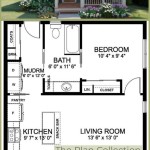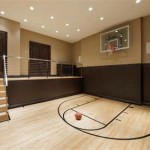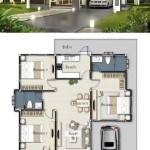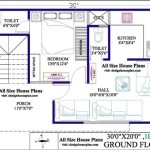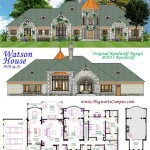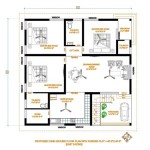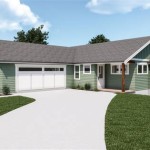```html
24 X 16 House Plans: Maximizing Space and Efficiency
The design and construction of a house, regardless of its size, require careful planning and consideration. 24 X 16 house plans present a unique set of challenges and opportunities. Optimizing small spaces to meet diverse needs is essential. This article explores various aspects of 24 X 16 house plans, encompassing layout considerations, functionality, and design strategies to create comfortable and efficient living spaces.
A 24 X 16 house plan translates to a modest 384 square feet. This footprint necessitates a strategic approach to space utilization. Considerations include the number of occupants, intended use of the space (primary residence, vacation home, rental unit), and local building codes and regulations. Careful attention must be given to circulation, storage, and the integration of essential amenities within the limited area.
Key Point 1: Optimizing Layout and Floor Plan
The layout of a 24 X 16 house is paramount to its functionality and perceived spaciousness. Open-concept designs are frequently employed to maximize the flow of light and air throughout the structure. This approach typically combines the living, dining, and kitchen areas into a single, unified space, eliminating the need for interior walls that would otherwise restrict movement and visibility It allows for better furniture arrangement and more social interaction within the dwelling. However, appropriate zoning is necessary to define distinct areas within the open space. This could be achieved through careful furniture placement, area rugs, or changes in flooring materials.
In considering the location of the bedroom and bathroom, privacy is a key concern. The bedroom is usually situated at one end of the house, perhaps towards the back for enhanced seclusion. Bathrooms are typically designed to be compact and efficient, utilizing space-saving fixtures such as wall-mounted toilets and corner sinks. A well-placed bathroom can also act as a buffer zone between the living area and bedroom, minimizing noise transfer. Furthermore, the placement of windows and doors must be carefully considered to maximize natural light and ventilation without compromising privacy or structural integrity.
Storage is another essential aspect to consider in a compact house plan. Built-in storage solutions, such as shelving units, cabinets, and under-bed storage, are highly effective in maximizing space utilization. Vertical storage solutions, which exploit the height of the walls, are particularly beneficial in small homes, allowing for the efficient organization of belongings without occupying valuable floor space. Also, Multi functional furniture are essential for saving space. For example, a foldable sofa or a dinning table that can be converted to a coffee table.
Key Point 2: Functionality and Efficiency
Functionality is key to any successful small house design. Each area must serve its purpose effectively and efficiently. The kitchen, though compact, needs to be well-equipped for meal preparation. A galley-style kitchen, where appliances and countertops are arranged along a single wall or two parallel walls, is a common choice for small spaces. Optimizing counter space is critical, and features like pull-out cutting boards and integrated storage can significantly enhance functionality.
The bathroom must be designed with water conservation in mind. Low-flow toilets, showerheads, and faucets can dramatically reduce water consumption without sacrificing performance. Proper ventilation is also crucial to prevent moisture buildup and mold growth. A small window or an exhaust fan can effectively address these concerns.
Energy efficiency is another critical consideration. Insulating the walls, roof, and floor adequately can significantly reduce heating and cooling costs. Utilizing energy-efficient windows and doors can also minimize heat loss or gain. A carefully planned heating and cooling system appropriate for the size of the space is vital. Consider a mini-split heat pump system for energy efficient heating and cooling. LED lighting should be used throughout the house to minimize energy consumption.
Beyond the practical considerations, creating a comfortable and inviting atmosphere is equally important. Strategic use of lighting, color, and texture can significantly impact the perceived size and ambiance of the house. Light colors tend to make spaces feel larger and brighter, while darker colors can create a more intimate and cozy feel. Mirrors can also be used to reflect light and create the illusion of more space.
Key Point 3: Design and Aesthetics in Limited Spaces
When designing a 24 X 16 house, it is important to embrace minimalist design principles. Clutter can quickly overwhelm a small space, making it feel cramped and uncomfortable. A minimalist approach involves decluttering frequently and prioritizing essential items. Choosing furniture with clean lines and simple designs can also contribute to a more streamlined and spacious feel.
Natural light is an invaluable asset in any home, but it's particularly important in small spaces. Maximize the amount of natural light entering the house by incorporating large windows and skylights where possible. Avoid heavy window coverings that block light. Instead, opt for sheer curtains or blinds that allow light to filter through while providing privacy.
Careful attention to detail is essential in small house design. Small details, such as hardware, trim, and lighting fixtures, can significantly impact the overall aesthetic. Choose high-quality materials and finishes that reflect your personal style and enhance the overall design. Incorporating pops of color through accessories and artwork can add personality and visual interest without overwhelming the space.
Consider the exterior aesthetics of the house. The exterior design should complement the surrounding environment and reflect the overall design style of the house. Simple, clean lines and a well-maintained exterior can significantly enhance curb appeal. Landscaping can also play a role in creating a welcoming and inviting atmosphere.
The selection of furniture is also crucial. Multi functional furniture is really suitable for this space. For example, a foldable sofa or a dinning table that can be converted to a coffee table. The color and texture of the furniture also helps to create a bigger space, normally lighter color is used to reflect light.
24 X 16 house plans offer a unique opportunity to design a compact, efficient, and comfortable living space. By carefully considering the layout, functionality, and design, it is possible to create a house that meets the needs of its occupants and provides a welcoming and inviting atmosphere. With thoughtful planning and attention to detail, a small house can be a stylish and functional home.
The challenge of designing within the constraints of a 24 X 16 footprint can foster creativity and innovation. It necessitates a focus on essential elements and a prioritization of efficiency. The result can be a highly functional and personalized space that reflects the occupant's lifestyle and values. By embracing the principles of small house design, individuals can create a comfortable and sustainable living environment that meets their needs while minimizing their environmental impact.
Ultimately, the success of a 24 X 16 house plan depends on a comprehensive understanding of the space, the needs of the occupants, and the principles of efficient design. By carefully considering these factors, it is possible to create a small house that is both functional and aesthetically pleasing, providing a comfortable and fulfilling living experience.
```
Small House Floor Plans Tiny

16 X 24 Aspen Cabin Architectural Plans Build Blueprint

16 X 24 House Plan 384 Sqft Design 1 Bhk As Per Vastu Ghar Ka Naksha

16x24 House 1 Bedroom Bath 555 Sq Ft Floor Plan Instant Model 2a

16 X 24 Small House Design Ll 380 Sqft Plan Ghar Ka Naksha

Pin Page

16 X 24 House Plan Ll 384 Sqft Ghar Ka Naksha Design

16x24 Ft House Plan

16 By 24 Tiny House Plans Small

16 X 24 Small House Plan Ii Ghar Ka Naksha 384 Sqft Design


